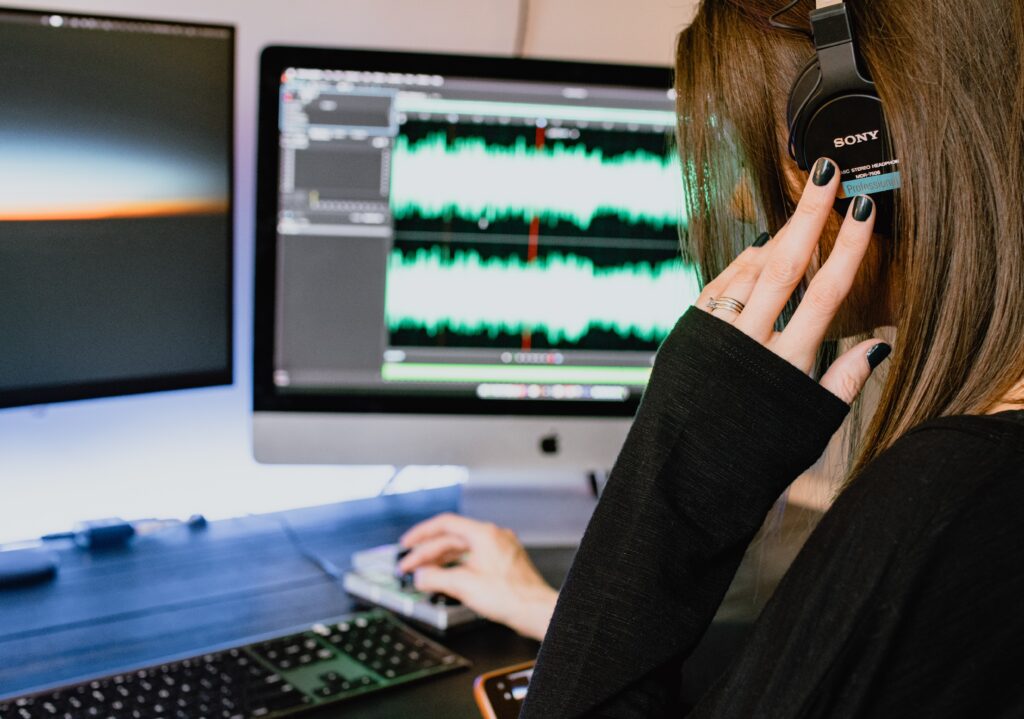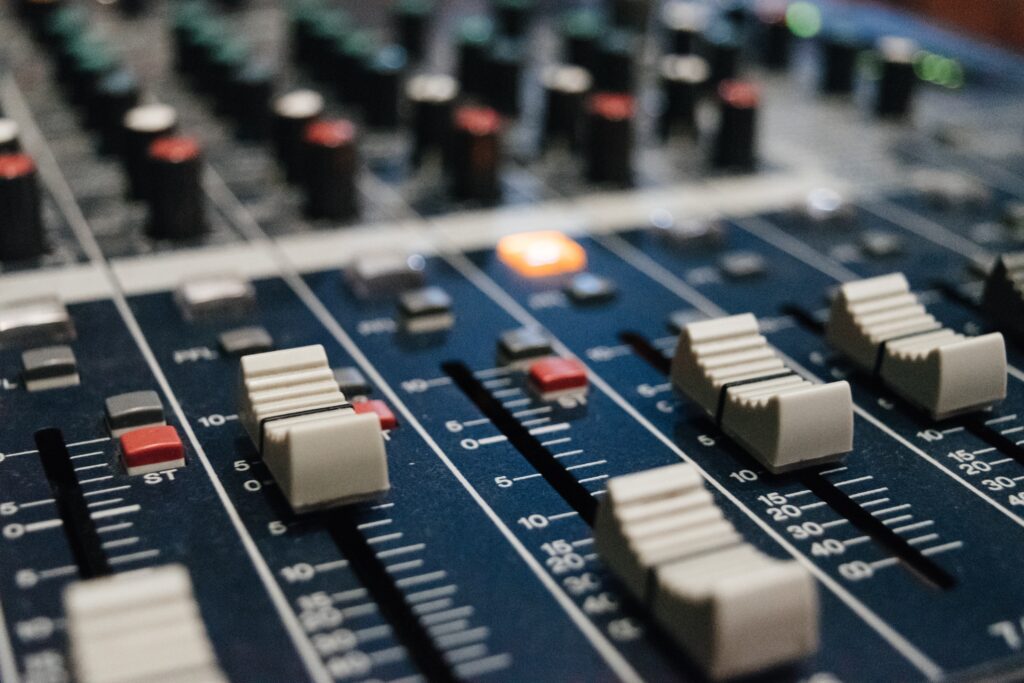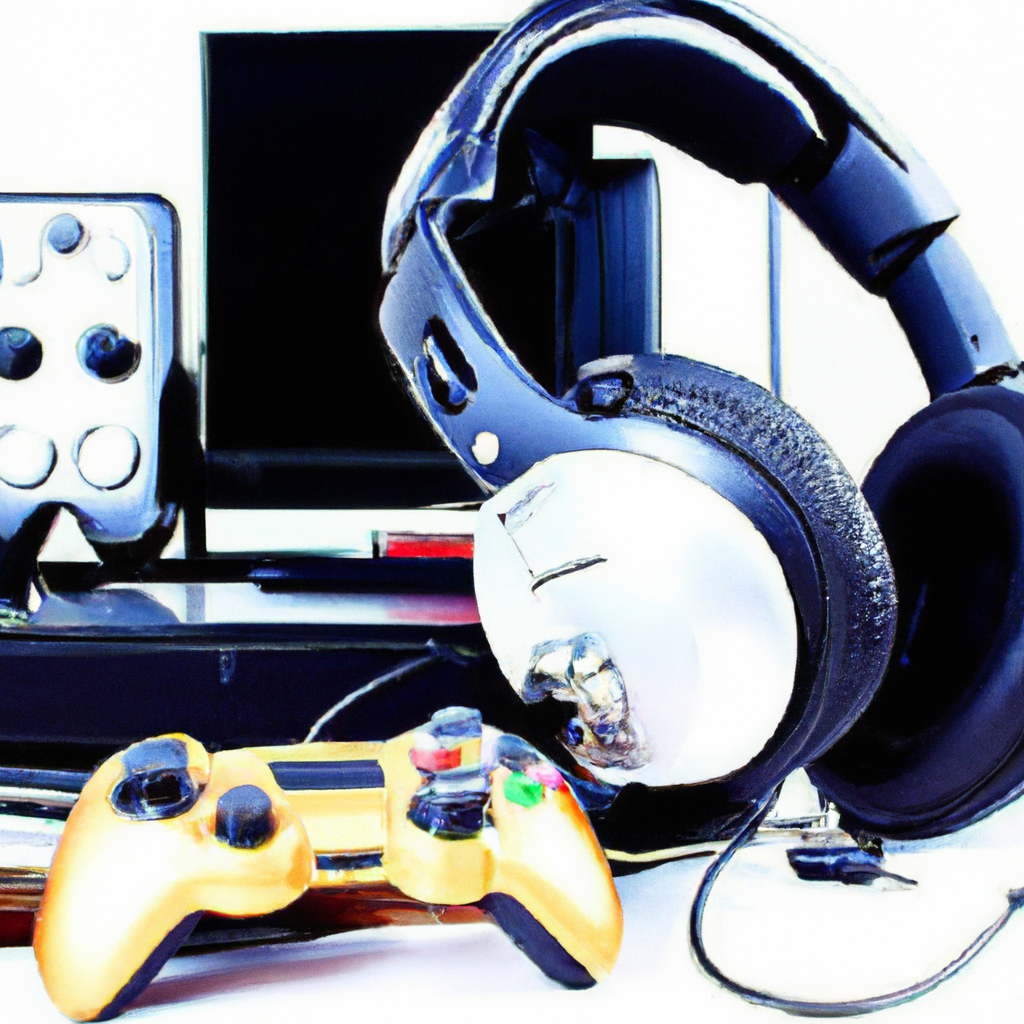How Do You Set Up Dual Audio Output For Gaming And Streaming? 6 Simple Timely Steps
Imagine being able to seamlessly switch between the audio output for your gaming and streaming activities. With dual audio output, you can enjoy high-quality gaming sound effects while also ensuring that your viewers can hear your voice clearly during live streams. In this article, we’ll address the question, “How Do You Set Up Dual Audio Output For Gaming And Streaming?” You will discover the step-by-step process of setting up dual audio output for gaming and streaming, empowering you to enhance both your gaming experience and your content creation endeavors. Get ready to take your audio game to the next level!
Choosing the Right Audio Hardware
Understanding the Audio Requirements
When it comes to setting up dual audio output for gaming and streaming, it’s essential to have a clear understanding of your audio requirements. This includes considering factors like the number of audio sources you’ll be using, the level of audio quality you desire, and the specific devices you’ll be connecting.
Selecting a Sound Card for Dual Audio Output
A sound card is a crucial component for setting up dual audio output. It serves as the interface between your computer and audio devices, allowing you to process and output audio signals. When selecting a sound card, it’s important to consider factors such as the number of input and output ports, audio quality specifications, and compatibility with your computer’s operating system.
Considering Alternative Audio Solutions
While a dedicated sound card is often the go-to choice for setting up dual audio output, there are alternative solutions worth considering. USB audio interfaces, for example, offer flexibility and convenience, allowing you to connect multiple audio devices without needing to install an internal sound card. Additionally, external mixers can provide advanced control over audio routing and mixing.
Configuring Audio Output Settings
Adjusting Game Audio Settings
To achieve the ideal balance between game audio and streaming audio, it’s important to adjust the game audio settings in your gaming software. Most games offer options to customize the volume levels of different sound elements, such as background music, sound effects, and voice chat. Experimenting with these settings will help you find the right mix for your gaming and streaming needs.
Setting Up Audio for Streaming
When setting up audio for streaming, it’s crucial to ensure that your streaming software recognizes and captures the correct audio sources. You’ll need to configure your streaming software to capture the audio output from your game as well as your microphone input. This can typically be done through the audio settings within the streaming software.
Utilizing Virtual Audio Cables
Virtual audio cables are software solutions that allow you to create virtual connections between audio sources and audio destinations on your computer. This can be particularly useful when setting up dual audio output, as it enables you to route specific audio sources to different output devices. Virtual audio cables give you greater control over your audio routing and allow for more advanced setups.

Using Audio Routing Software
Installing and Configuring Audio Routing Software
Audio routing software, also known as virtual audio mixers or virtual audio routers, is key to managing multiple audio sources and outputs. There are several options available, both free and paid, that offer various features and capabilities. Once you have selected the audio routing software that suits your needs, install it and familiarize yourself with its configuration options.
Allocating Audio Sources for Different Outputs
With audio routing software, you can allocate specific audio sources to different output devices. For example, you could assign game audio to your headphones while directing streaming audio to your speakers. This allows for separate control and customization of audio levels for each output. Take the time to explore the capabilities of your chosen audio routing software and set up your desired audio allocations.
Testing and Troubleshooting Audio Routing
After configuring your audio routing software, it’s crucial to thoroughly test and troubleshoot to ensure everything is working as intended. Test each audio source and its respective output to confirm proper routing. If any issues arise, such as audio cutting out or incorrect routing, consult the documentation of your audio routing software or seek online support communities for assistance.
Setting Up Multiple Audio Devices
Connecting Multiple Audio Devices
To set up multiple audio devices for dual audio output, start by connecting the desired devices to your computer. Depending on the type of devices you are using, this may involve connecting via USB, HDMI, or traditional audio jacks. Ensure that the devices are properly recognized by your operating system and that drivers, if required, are installed correctly.
Configuring Audio Playback Devices
Once your audio devices are connected, you’ll need to configure their playback settings. In the audio settings of your operating system, you can designate which devices are used for audio output. This allows you to specify which device handles your game audio and which one handles your streaming audio. Take the time to assign the correct devices to ensure everything functions as intended.
Syncing Audio Sources
It’s essential to ensure that all audio sources are in sync when setting up dual audio output. This means that the game audio and streaming audio should be heard simultaneously without any noticeable delay or mismatch. Adjusting audio buffer sizes in your audio routing software, sound card settings, or streaming software can help achieve optimal synchronization.

Optimizing Audio Quality and Stability
Ensuring Proper Audio Levels
Proper audio levels are vital for a pleasant gaming and streaming experience. It’s important to ensure that audio levels from different sources are balanced and not overpowering. Adjusting volume sliders within your audio routing software, sound card settings, and game software can help achieve the desired balance. Regularly check and adjust audio levels to prevent audio clipping or overly quiet audio.
Eliminating Audio Interference
Audio interference, such as static, buzzing, or crackling sounds, can significantly diminish the quality of your audio output. To minimize audio interference, ensure that your audio cables are properly connected, avoid placing audio devices near sources of electromagnetic interference (e.g., power cables), and consider using shielded audio cables. Additionally, updating your sound card drivers and firmware can help resolve any compatibility issues that may cause interference.
Reducing Latency and Delay
Latency and delay in audio can negatively affect your gaming and streaming experience. To reduce latency, make sure that your sound card drivers are up to date and that your computer’s processing power is sufficient to handle the demands of dual audio output. Additionally, adjusting buffer sizes in your audio routing software or sound card settings can help minimize latency.
Balancing Game and Streaming Audio
Adjusting Audio Mix for Gaming and Streaming
Achieving the right balance between game audio and streaming audio is crucial for a professional and immersive streaming experience. Experiment with the volume levels and equalization settings of your game audio, microphone input, and other audio sources to find a mix that allows your voice to be clearly heard without overpowering the game audio.
Using Separate Audio Mixers
Using separate audio mixers can add further control and flexibility to your dual audio setup. By connecting a dedicated audio mixer to your sound card or audio interface, you can have independent control over game audio, microphone, and other audio sources. This allows for real-time adjustments during streaming without the need to interrupt your gaming session.
Controlling Audio Levels in Broadcasting Software
Most streaming software provides audio controls that allow you to adjust audio levels on the fly while broadcasting. Take advantage of these controls to fine-tune your audio mix during streaming. This allows you to quickly adapt audio levels, balance game audio with voice chat, or adjust volume levels for specific audio sources without disrupting your broadcast.

Recording and Monitoring Audio
Setting Up Audio Recording Software
If you plan to record your gaming and streaming sessions, it’s important to have the proper audio recording software set up. There are several options available for recording software, ranging from basic to advanced features. Select a software that suits your needs and configure it to capture both game audio and microphone input.
Monitoring Audio Inputs and Outputs
Monitoring your audio inputs and outputs is crucial to ensure that your audio setup is working correctly. Use the audio monitoring features provided by your sound card, audio routing software, or streaming software to listen to your audio sources in real-time. This allows you to detect any audio issues, such as distorted sound or unexpected noise, and make necessary adjustments before broadcasting or recording.
Using Audio Equalizer Tools
Audio equalizer tools can enhance the quality of your audio output by adjusting the frequency response of specific audio sources. This allows you to fine-tune the audio to suit your personal preferences or to compensate for any deficiencies in your audio devices. Explore the equalizer settings in your audio routing software, sound card settings, or streaming software to make the necessary adjustments.
Utilizing Headset Splitter Cables
Understanding Headset Splitter Cables
Headset splitter cables are a convenient solution for connecting both headphones and a microphone to a single audio jack. They split the audio and microphone signals into separate connectors, allowing you to easily connect your headset to your sound card or audio interface without the need for additional adapters. Ensure that the headset splitter cable you choose is compatible with your audio devices.
Connecting Devices with Headset Splitter Cables
To use a headset splitter cable, simply plug the male end of the cable into the audio jack of your computer or sound card. Then, connect your headphones and microphone to the respective female connectors on the other end of the cable. Ensure that the headphones are connected to the output connector, and the microphone is connected to the input connector.
Configuring Audio Output in Splitter Cables
While headset splitter cables provide convenience, they may not offer the same level of customization as dedicated audio routing software or sound cards. However, you can still adjust the audio levels and balance by adjusting the volume controls on your headphones and microphone. Additionally, make any necessary adjustments to your audio settings in your operating system to ensure proper audio output.

Managing Multiple Output Devices
Selecting Default Output Devices
To manage multiple output devices effectively, it’s important to select the default output devices within your operating system. This ensures that the correct devices are used for audio output, and you don’t need to manually switch the output devices every time you want to switch between gaming and streaming. Set your preferred devices as the default in your operating system’s audio settings to streamline the audio output process.
Switching Output Devices on the Fly
While default output devices provide convenience, there may be situations where you need to switch output devices on the fly. For example, you might want to switch from using headphones for gaming to using speakers for streaming. Many audio routing software options provide hotkeys or shortcuts to quickly switch between different output devices without needing to navigate through system settings.
Creating Presets for Different Audio Scenarios
To streamline the process of managing multiple output devices, consider creating presets for different audio scenarios. For example, you could create a preset for gaming that sets your gaming headphones as the default output. Similarly, you could create a preset for streaming that sets your streaming speakers as the default output. This allows you to quickly apply the desired audio configuration with a single click.
Troubleshooting Common Issues
Audio Output Not Detected
One common issue when setting up dual audio output is when the audio output is not detected by your computer. If this occurs, ensure that all cables are properly connected, drivers are installed correctly, and the output devices are powered on. Additionally, check the audio settings in your operating system to ensure that the correct output devices are selected.
Audio Channels Mismatched
In some cases, you may encounter a mismatch between audio channels when setting up dual audio output. This can result in audio being heard through the incorrect speakers or headphones. Check the audio settings in your operating system and audio routing software to ensure that the channels are correctly assigned to the desired output devices. Adjusting the channel configurations can help resolve any mismatched audio issues.
Device Conflict Issues
Device conflicts, such as multiple devices trying to use the same audio port or conflicting drivers, can cause issues with dual audio output. To troubleshoot device conflicts, ensure that only the necessary audio devices are connected, disable any unnecessary audio devices in your operating system settings, and update drivers for all audio devices. If conflicts persist, consult the documentation of your audio routing software or seek online support communities for further assistance.
Setting up dual audio output for gaming and streaming may seem complex at first, but with the right hardware, software configuration, and troubleshooting, it can greatly enhance your gaming and streaming experience. Take the time to understand your audio requirements, explore different audio solutions, and optimize your audio quality to create a professional and immersive audio setup. Happy gaming and streaming!
How Do You Set Up Dual Audio Output For Gaming And Streaming: Conclusion
In conclusion, the article “How Do You Set Up Dual Audio Output For Gaming And Streaming” has delved into the intricacies of configuring a dual audio output system that enhances your gaming and streaming experiences. Throughout this comprehensive guide, we have explored various methods and solutions to achieve this setup, catering to a wide range of hardware and software configurations.
We began by highlighting the importance of dual audio output, emphasizing how it can significantly improve the quality and flexibility of your gaming and streaming endeavors. Whether you’re a content creator aiming to provide a seamless experience for your audience or a gamer seeking immersive soundscapes without compromising communication, dual audio output is a valuable asset.
The article then detailed the step-by-step process of setting up dual audio output on different platforms, including Windows, Mac, and gaming consoles such as Xbox and PlayStation. We provided clear instructions, troubleshooting tips, and alternative methods for each platform, ensuring that readers of all technical backgrounds could follow along with ease.
Furthermore, we discussed the various hardware options available, from USB audio interfaces and sound cards to HDMI audio extractors and virtual audio cables. Each solution was thoroughly explained, enabling readers to make informed decisions based on their specific needs and budgets.
We also addressed potential challenges and common issues that users might encounter during the setup process, offering practical solutions to overcome them. It’s important to note that configuring dual audio output can be a complex task, but with the guidance provided in this article, readers should be well-equipped to tackle any obstacles.
In addition, we emphasized the significance of sound quality and synchronization in gaming and streaming setups. Achieving optimal audio quality and eliminating latency is crucial for a seamless experience, and the article provided insights into selecting the right equipment and settings to achieve these goals.
To sum it up, the article “How Do You Set Up Dual Audio Output For Gaming And Streaming” serves as a comprehensive guide that equips readers with the knowledge and skills needed to create a dual audio output system tailored to their preferences. Whether you’re a streamer, gamer, or someone who simply values high-quality audio, this guide empowers you to enhance your audio setup and elevate your gaming and streaming experiences to new heights. By following the steps and recommendations provided, you’ll be well on your way to achieving immersive, crystal-clear audio that enhances every aspect of your multimedia endeavors.





